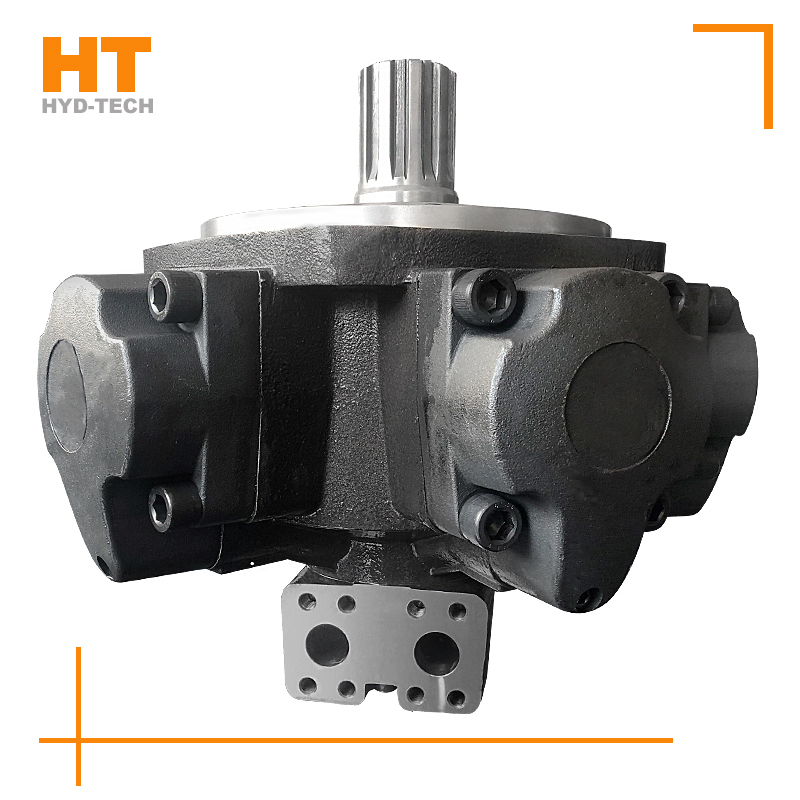Blade type Due to the efficiency of working pressure oil, the imbalance sense causes the torque of motor rotor. blade Hydraulic motor The output torque of is related to the air displacement of the hydraulic motor and the pressure difference of the import and export trade of the hydraulic motor. The speed of the vane hydraulic motor is determined by the total flow of the keyed hydraulic motor. Because the hydraulic motor must generally rotate in the positive and reverse direction, the blades of the vane type hydraulic motor should be placed radially. In order to better maintain the working pressure oil in the blade root from beginning to end, this product should be installed on the rear side of the blade root and the channel of the working pressure chamber. In order to better ensure that the rear vane hydraulic motor can operate normally according to the working pressure, the top of the vane must be closely contacted with the inner surface of the motor stator to ensure excellent sealing. Therefore, this product should be installed at the blade root. Moment flashes yellow. The vane type hydraulic motor is small in size, small in inertia moment and dexterous in posture. It is suitable for places with high commutation frequency, but it has large leakage and is unstable at low speed. Therefore, the vane type hydraulic motor is generally used for fast, small torque and sensitive postural regulation.
Radial plunger and Radial plunger hydraulic motor The principle is that when the working pressure oil enters the bottom end of the plunger in the cylinder block according to the dialog box of fixed oil distribution shaft 4, the plunger extends outward and firmly rests on the inner cavity of the piston rod. The motor stator has axial force between the motor stator and the cylinder block. When the point between the plunger and the motor stator contacts, the recoil force of the motor stator to the plunger is zero. Force can be converted into 2 portions. When the hydraulic press at the bottom end of the plunger is P, the diameter of the plunger is D, and the intersection angle between the force and the force is X, the force causes torque to the cylinder and makes the cylinder rotate. The cylinder block is driven by end to end connection, and the torque and speed are output radially and externally. The upper side dissects the torque on one of the piston rods. Because there are several plungers in the steam pressure zone, the torque generated on this plunger makes the cylinder block rotate and output torque. radial Piston Motors The key is used in places with low speed and high torque.
1. Single effect connecting rod radial plunger motor
Crankshaft motor diagram, axial flow distribution hydraulic motor diagram, pentagonal radial motor installation animation, single effect connecting rod radial plunger motor circuit schematic diagram in operation is pentagram. The motor is composed of housing 1, engine crankshaft 6, distribution shaft 5, crankshaft 3, plunger 2 and rack 4. Advantages: simple structure and reliable operation. Defects: large volume, heavy cleanness, large distortion and pulsation drinks, poor reliability of low-speed gear.
What is the structure of the hydraulic motor?
2. Plunger motor with multi-function internal curve diagram
The motor is composed of regulator shaft 1, cylinder block 2, plunger 3, bearing beam 4, roller bearing 5, motor stator 6 and output shaft 7. The output of this motor is twice that of a single four stroke motor. Equivalent to 21 piston rods. Under the same pressure, with the increase of the number of equivalent circuit plunger, the output torque correspondingly expands, and the torque pulse beverage rate decreases. This kind of motor is sometimes made into three rows of plunger plugs. The total number of plunger is large, the output torque is further expanded, and the torque fluctuation is further reduced. Therefore, the motor can have high horsepower and can operate stably at extremely low speed. Because the motor must double rotate, the blade slots are arranged radially.
3. The plunger type fast hydraulic motor and plunger type fast hydraulic motor are generally radial.


![]()

